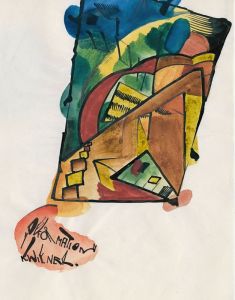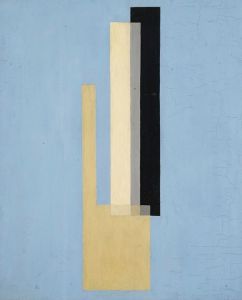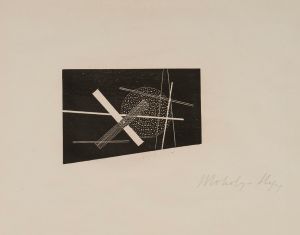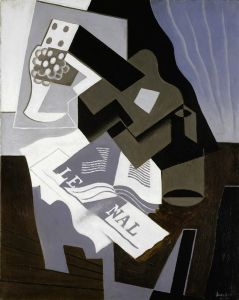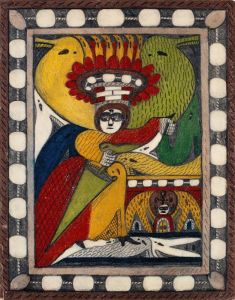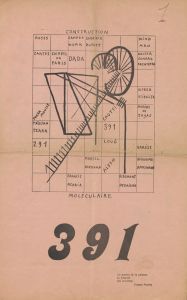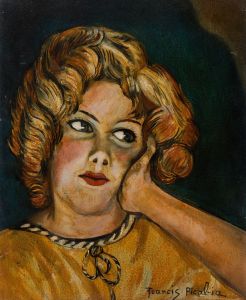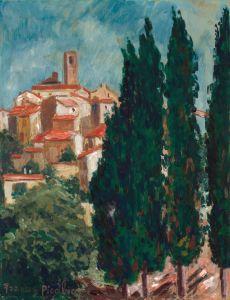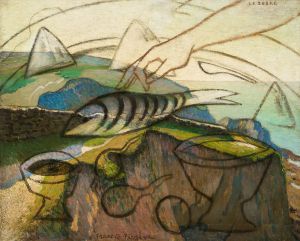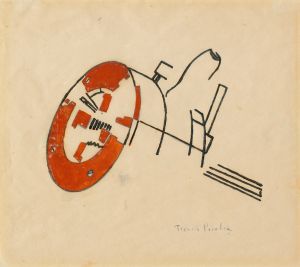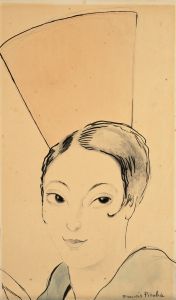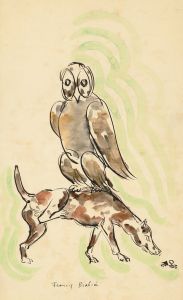
Espagnole
A hand-painted replica of Francis Picabia’s masterpiece Espagnole, meticulously crafted by professional artists to capture the true essence of the original. Each piece is created with museum-quality canvas and rare mineral pigments, carefully painted by experienced artists with delicate brushstrokes and rich, layered colors to perfectly recreate the texture of the original artwork. Unlike machine-printed reproductions, this hand-painted version brings the painting to life, infused with the artist’s emotions and skill in every stroke. Whether for personal collection or home decoration, it instantly elevates the artistic atmosphere of any space.
Francis Picabia (1879-1953) was a French avant-garde painter, poet, and typographist. He is associated with several important art movements of the early 20th century, including Impressionism, Cubism, Dada, and Surrealism. One of his notable works is "Espagnole," created in 1921.
"Espagnole" is a painting that reflects Picabia's diverse artistic influences and his tendency to experiment with different styles and techniques. The title, which translates to "Spanish Woman" in English, suggests a cultural or thematic connection to Spain, although the specific inspiration or context for this work is not extensively documented.
The painting features a stylized representation of a woman, rendered with geometric forms and bold colors. This approach is indicative of Picabia's interest in Cubism, a movement that he was significantly involved with during the early 1910s. Cubism, pioneered by artists like Pablo Picasso and Georges Braque, emphasized the fragmentation of objects into geometric shapes and the depiction of multiple viewpoints simultaneously.
In "Espagnole," Picabia employs these Cubist techniques to deconstruct the figure of the woman, presenting her in a way that challenges traditional notions of perspective and form. The use of vibrant colors and dynamic composition also reflects Picabia's departure from the more subdued palette of his earlier Impressionist works.
Picabia's involvement with the Dada movement, which he co-founded with artists like Marcel Duchamp and Tristan Tzara, is also evident in "Espagnole." Dada was characterized by its rejection of conventional aesthetics and its embrace of absurdity and anti-art sentiments. While "Espagnole" is not as overtly provocative as some of Picabia's other Dada works, it still embodies the movement's spirit of innovation and defiance of artistic norms.
Throughout his career, Picabia was known for his eclectic style and his refusal to be confined to a single artistic movement. This is reflected in "Espagnole," which combines elements of Cubism, Dada, and even hints of Surrealism. The painting's abstract quality and the enigmatic expression of the woman suggest a dreamlike or subconscious dimension, aligning with the Surrealist interest in exploring the inner workings of the mind.
"Espagnole" is part of Picabia's broader body of work that continually pushed the boundaries of art and challenged viewers to reconsider their perceptions of reality and representation. His ability to blend different styles and his willingness to experiment with new ideas made him a pivotal figure in the development of modern art.
Today, "Espagnole" is recognized as an important example of Picabia's innovative approach to painting. It is held in various public and private collections, where it continues to be studied and appreciated for its contribution to the evolution of 20th-century art.





